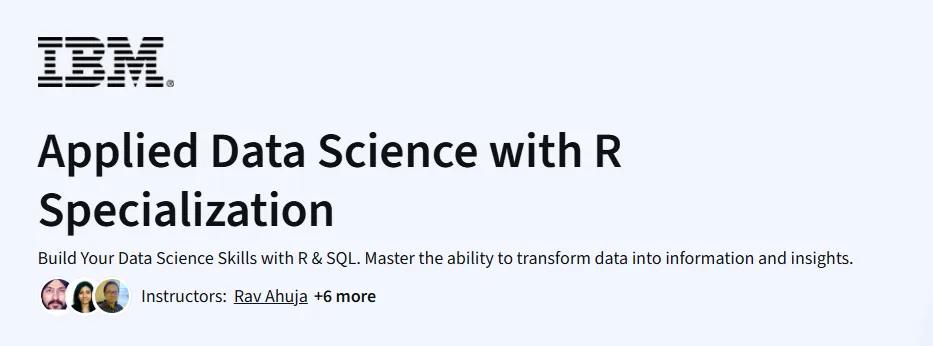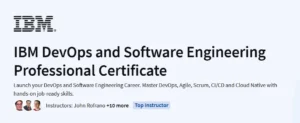What will you learn in Applied Data Science with R Specialization Course
Build foundational knowledge in R programming tailored for data science tasks.
Perform statistical data analysis, data wrangling, and visualization in R.
Work with real-world data using tidyverse packages and advanced visualization libraries.
Build machine learning models and understand data modeling pipelines in R.
Program Overview
Course 1: Introduction to R Programming
⏱️ 2 weeks
Topics: R syntax, data types, functions, conditionals
Hands-on: Write R scripts, use control structures, manage packages
Course 2: Data Wrangling with R
⏱️ 3 weeks
Topics: Data manipulation with
dplyr,tidyr, and data cleaningHands-on: Load, clean, transform datasets using tidyverse
Course 3: Data Visualization in R
⏱️ 3 weeks
Topics: Visualizing with
ggplot2, plot customizationHands-on: Create bar plots, histograms, scatterplots, and advanced graphics
Course 4: Machine Learning with R
⏱️ 4 weeks
Topics: Supervised and unsupervised learning, model evaluation
Hands-on: Build decision trees, random forests, and clustering models
Course 5: Data Science Capstone Project with R
⏱️ 3 weeks
Topics: End-to-end project using real datasets
Hands-on: Apply R skills to analyze, model, and visualize data
Get certificate
Job Outlook
R is in high demand for roles such as Data Analyst, Statistician, and Research Scientist.
Ideal for candidates entering roles in academia, healthcare, finance, and policy research.
Median salary ranges from $65K–$115K depending on role and experience.
R remains a top skill for statistical analysis and data visualization tasks.
Specification: Applied Data Science with R Specialization
|
FAQs
- No prior R programming experience is required; the course introduces R from scratch.
- Basic familiarity with computers and data concepts is helpful but not mandatory.
- Exercises guide learners step-by-step through coding and analysis tasks.
- Supplemental tutorials can accelerate understanding for complete beginners.
- Hands-on projects help build confidence as learners progress.
- The course uses real-world datasets to practice data cleaning, visualization, and modeling.
- Learners perform statistical analyses and exploratory data analysis (EDA) in R.
- Projects simulate scenarios similar to those in professional data science roles.
- Guided labs reinforce concepts through practical application.
- Hands-on work helps learners build a portfolio to demonstrate their skills.
- Provides foundational skills in data analysis, visualization, and statistical modeling using R.
- Learners gain practical experience applicable to data analyst or junior data scientist positions.
- Completion can strengthen resumes and portfolios for job applications.
- Additional learning in machine learning or big data may complement the course.
- Projects demonstrate applied problem-solving abilities to potential employers.
- R is widely used for statistical analysis, visualization, and reporting in many industries.
- Skills in data wrangling, visualization, and modeling are transferable to other analytics platforms.
- Applied exercises simulate workflows common in enterprise environments.
- Understanding R fundamentals makes it easier to learn additional data science tools later.
- Mastery of these skills enhances employability for analytics or research roles.
- Estimated completion is around 4–6 months at a part-time pace.
- Weekly commitment of 4–6 hours is generally sufficient for lectures and exercises.
- Regular practice in coding, visualization, and modeling reinforces learning.
- Revisiting assignments or exploring additional datasets may require extra time.
- Consistent engagement ensures learners develop both conceptual understanding and practical R skills.





